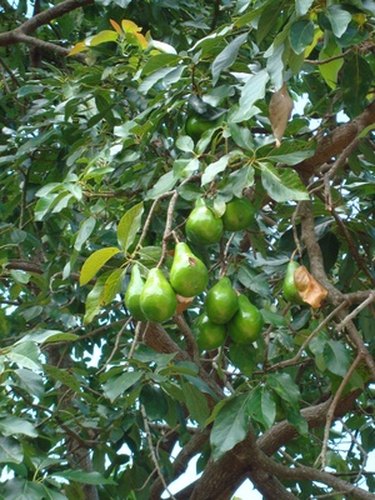Things You'll Need
Insecticide
Traps

A rose chafer beetle is a multi-colored insect that likes to feed on fruit trees, grape vines, flowers, shrubs and trees. The pest's back is straw-colored, its legs and underside are reddish brown-to-black and its head is red. The adult beetle measures only a half-inch long. Rose chafer beetles eat the leaves of the plants, leaving just the veins intact. Natural and chemical means can be used to get rid of this pesky garden pest.
Step 1
Survey your trees, shrubs or crops to determine the extent of potential foliage damage from rose chafer beetles. The Ohio State University's Ohio Agricultural Research and Development Center suggests visually inspecting all four corners of your crops or other greenery as well as some in the middle section. Divide the number of plants or vines you've inspected by the numbers of beetles you find. Your results will determine your plan of action.
Video of the Day
Step 2
Pick off the odd beetle or two you find on your plants. Handpicking is a natural and efficient way to get rid of a few beetles, but loses its efficiency when you've got a full-blown infestation. Destroy the pests and discard in a trash container away from animals and children; they are poisonous and may cause harm to your pets if ingested.
Step 3
Use chemical controls to get rid of the insects if you have an average of more than two beetles per plant or vine. Spray each affected area with an insecticide that contains methoxychlor, permethrin or carbaryl, suggests the University of Wisconsin Urban Horticulture website.
Step 4
Continue chemical treatment every three to four days until the rose chafer population visibly drops; you may need to spray more often if you're getting a lot of rain.
Step 5
Set traps to collect the beetles. A rose chafer trap is similar to a Japanese beetle trap and contains a substance to attract the pests away from your plants, at which point they will get stuck in the collection container. Place the traps 30 feet away from the plants you are protecting, or as a preventive measure, put one down for every 200 feet of extended area of yard or garden.
Video of the Day